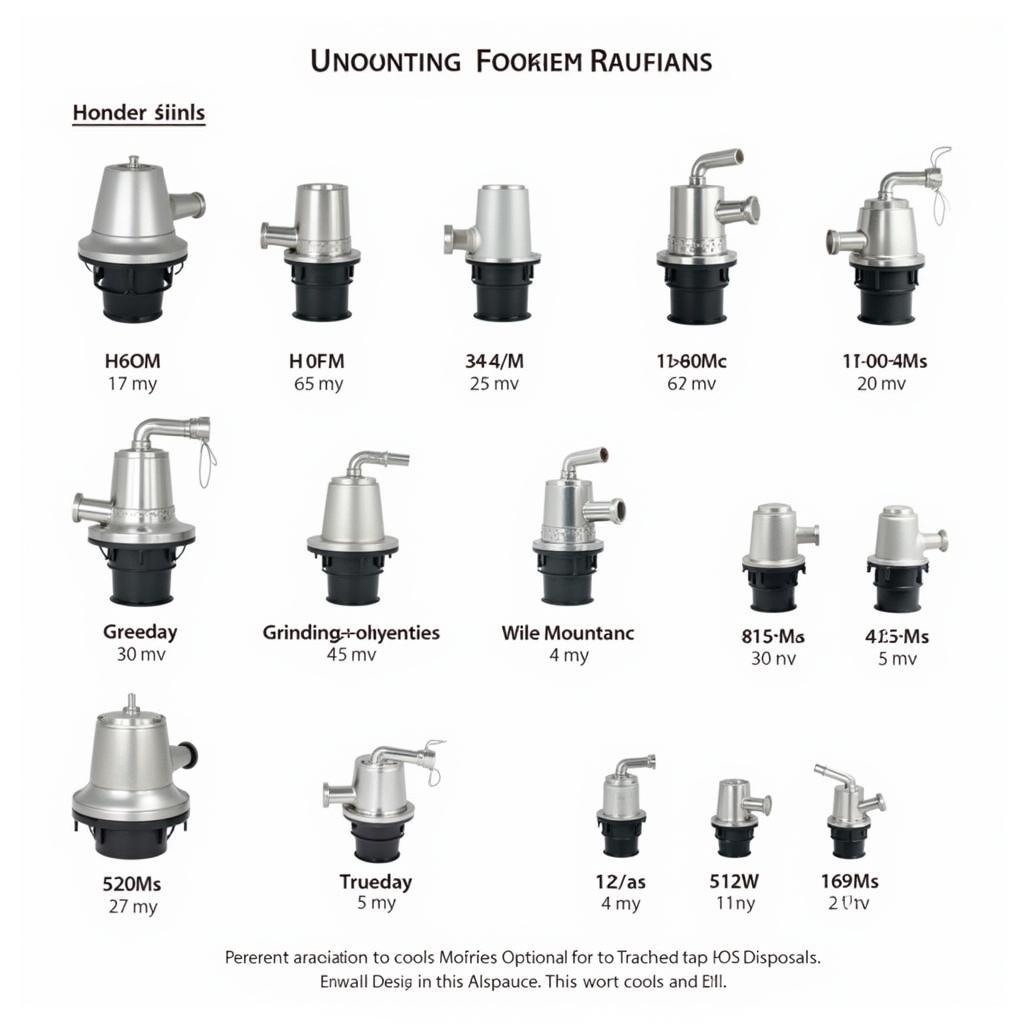Food Disposals, those handy kitchen appliances humming beneath our sinks, are a modern marvel. They efficiently grind food scraps into tiny particles, whisking them away through your plumbing system. But how much do you really know about these garbage-guzzling gadgets? Let’s dive deep into the world of food disposals, exploring everything from their functionality and benefits to proper maintenance and troubleshooting.
Understanding the Mechanics of Food Disposals
Food disposals, sometimes called garbage disposals, work on a simple yet effective principle. A powerful motor rotates a spinning impeller plate, which forces food waste against a stationary grind ring. This grinding action pulverizes the food into small enough pieces to be safely flushed away with wastewater. Different models offer varying horsepower and features, catering to different household needs.
Benefits of Owning a Food Disposal
A food disposal offers numerous advantages. It reduces the amount of household waste sent to landfills, minimizes unpleasant odors from decaying food in your trash can, and promotes a more hygienic kitchen environment. Furthermore, food disposals can help prevent pest infestations by eliminating a readily available food source. Some municipalities even encourage the use of food disposals as part of their waste management programs.
Why Choose a Food Disposal?
- Reduced Landfill Waste: Food disposals divert organic waste from landfills, reducing the production of harmful greenhouse gases.
- Odor Control: Say goodbye to smelly trash cans! Food disposals eliminate the source of the odor.
- Improved Hygiene: A cleaner kitchen means a healthier home.
- Pest Control: Eliminating food scraps reduces the attraction for unwanted pests.
- Convenience: Quick and easy disposal of food waste.
Common Food Disposal Problems and Solutions
Like any appliance, food disposals can encounter issues. Clogs are the most frequent problem, often caused by fibrous or starchy foods. Jams can also occur if hard objects like bones or utensils accidentally fall into the disposal chamber. Regular cleaning and proper usage can prevent most problems. how to get rid of rotten food smell
Troubleshooting Your Food Disposal
- Clogs: Try running cold water and turning the disposal on. If that doesn’t work, use tongs or pliers to carefully remove any visible obstructions.
- Jams: Most disposals have a reset button located on the bottom of the unit. Press this button to attempt to clear the jam.
- Strange Noises: Grinding noises are normal, but unusual humming or buzzing sounds could indicate a problem with the motor or other internal components.
Maintaining Your Food Disposal
Regular maintenance is crucial for optimal performance and longevity. jmc food equipment Regularly flushing the disposal with cold water after each use helps remove food particles and prevent buildup. Periodically cleaning the disposal with baking soda and vinegar or ice cubes and citrus peels can help eliminate odors and keep the blades sharp. Avoid putting grease, oil, or fibrous foods down the drain.
Choosing the Right Food Disposal for Your Needs
When selecting a food disposal, consider factors like horsepower, grinding chamber capacity, and noise level. Households that frequently cook and generate a lot of food waste might benefit from a higher horsepower model. Families with young children might prioritize a quieter unit. food waste disposer air switch Research different brands and models to find the best fit for your needs.  Various Food Disposal Models
Various Food Disposal Models
Conclusion
Food disposals are invaluable kitchen appliances, offering convenience and promoting a cleaner, more environmentally friendly home. By understanding their functionality, benefits, and maintenance requirements, you can ensure your food disposal continues to serve you efficiently for years to come. Remember to choose the right model for your needs and practice proper usage and maintenance to prevent common issues. Food disposals are a worthwhile investment for any modern kitchen.
FAQs
- Can I put bones in my food disposal? No, avoid putting hard objects like bones in the disposal.
- What should I do if my food disposal is jammed? Try using the reset button or tongs to remove the obstruction.
- How often should I clean my food disposal? Regularly flush it with cold water after each use and perform a deep clean periodically.
- Can I put coffee grounds down the food disposal? Yes, coffee grounds are generally safe for disposals.
- What should I do if my food disposal smells bad? Clean it with baking soda and vinegar or ice and citrus peels.
- Is it okay to put potato peels down the food disposal? Starchy foods like potato peels can clog the disposal, so it’s best to avoid them.
- How do I choose the right horsepower for my food disposal? Consider your household size and how much food waste you generate.
Need assistance with your food disposal or have further questions? Contact us at Phone Number: 02437655121, Email: minacones@gmail.com or visit us at 3PGH+8R9, ĐT70A, thôn Trung, Bắc Từ Liêm, Hà Nội, Việt Nam. We have a 24/7 customer support team ready to assist you.